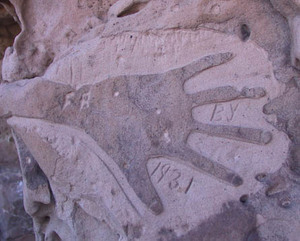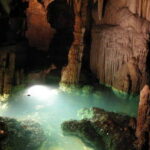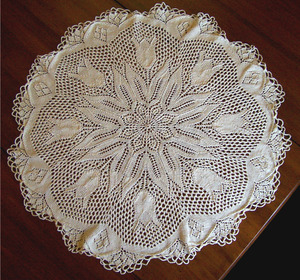On a rough and dusty dirt trail, south of John Martin Reservoir in Southeastern Colorado, a mystery is waiting to be solved. There, in the plains, where the grass is short and brittle, and Native American tribes once roamed, there are remnants of a culture dating back as far as 1000 B.C.
Although many people know and visit Picketwire, Picture and Vogel Canyons in Southeastern Colorado, very few know or have heard of a site some call Hicklin Springs. It’s not in any tour book, and you won’t read about the site, or how to get there in any magazines. That’s because the site itself isn’t part of the protected canyon lands, it’s privately owned, and locally protected by secrecy.
The rock art or petroglyphs at this location are some of the most remarkable in Colorado and have remained largely untouched. There is evidence of vandalism in some areas, but if you’re willing to crawl between the crevices of the rocks, you’ll be rewarded. Among some of the first and most noticeable designs are the more recent carvings known by some as “cowboy art.” These images, and often names were carved and dated by those passing through or living in the area in the recent past.
Although some of the images are faded, many are clearly visible and well preserved, including the “hand” design from 1931. You can read the names of people from the past, and it’s fun to think about the time frames when these people lived in or traveled through the area.
Just beyond the walls of cowboy art, and interspersed, you’ll find Native American Petroglyphs. A lot of these are from the Plains Indians. They are clearly visible, and the designs range from simple to complex animals and other symbols. These carving date from 1350 B.C. to the present. The older designs are “pecked” into the rock, meaning that they were formed by the outer surface being chipped away rather that scraped or worn away like the more recent designs.
While the Plains Indian and the Cowboy rock art are fascinating, if you look even closer, you’ll see pecked images dating back even further from an unknown and speculated about culture. Some of these images are attributed to the Vikings, but there is still debate concerning the actual origin of these designs.
More abstract in nature, there are some designs which have been described as Viking ships, as well as wavy lines which are attributed to an unknown people. Some of the designs look very much like the Futhark, or elder Viking alphabet. Others seem to almost predate any formal sort of alphabet, instead telling their story in contrasting line and strange arrays of many dots. These designs date from 2700 B.C. to 850 A.D. Finally, throughout the rock walls you will find parallel lines, similar to a number line that date back to 1000 B.C.
What To Bring
The best time to visit is from Spring to Fall, after the snow has melted. If you plan to visit during the summer, remember that temperatures can remain well over 100 degrees Fahrenheit. Bring at least one gallon of water for every member of your group.
There are no nearby restaurants or restroom facilities, so plan accordingly and pack a picnic lunch to enjoy in the great outdoors. Also remember that you will be in an area where there are snakes, spiders and other animals. Pack a first aid kit, and reapply sunblock often. Wear sturdy shoes and comfortable clothing, long pants are suggested because of the somewhat thick bushes near many of the rocks. Insects can be not only a nuisance, but a health risk with the threat of West Nile Virus, so ensure that you also have insect repellent on hand. Finally, bring leashes for your pets, and your camera for plenty of photographs of the day!
How to Get There
Before traveling to the site, you will arrive in Las Animas, located on Highway 50 in Southeastern Colorado. There are supplies, including food and accommodations available in Las Animas, so plan ahead. Alternatively, you can camp at John Martin Reservoir.
For directions to the actual site, contact the Park Office where a ranger will be able to inform you of any restrictions as well as advise you concerning adverse weather, snakes, or other wildlife to be aware of. Plan to travel down a rough dirt track which is NOT suitable for cars of any type. This area is best accessed via off-road vehicle.
Reminders
The rock art is beautiful and well preserved because people have been respectful of it for thousands of years. Please follow their example and take only photos, leave only footprints.
Private land is not the same as public property, there is a sign posted at the gate to the area that reminds you to close the gate. Please follow this reminder. Leave gates as you find them, that’s a rural area rule that can cause significant problems if not followed. Keep an eye open as you drive through the prairie. The area is a known Bald Eagle Nesting ground, as well as being home to pronghorn, deer, rabbits, coyotes, prairie dogs, and many other creatures.






